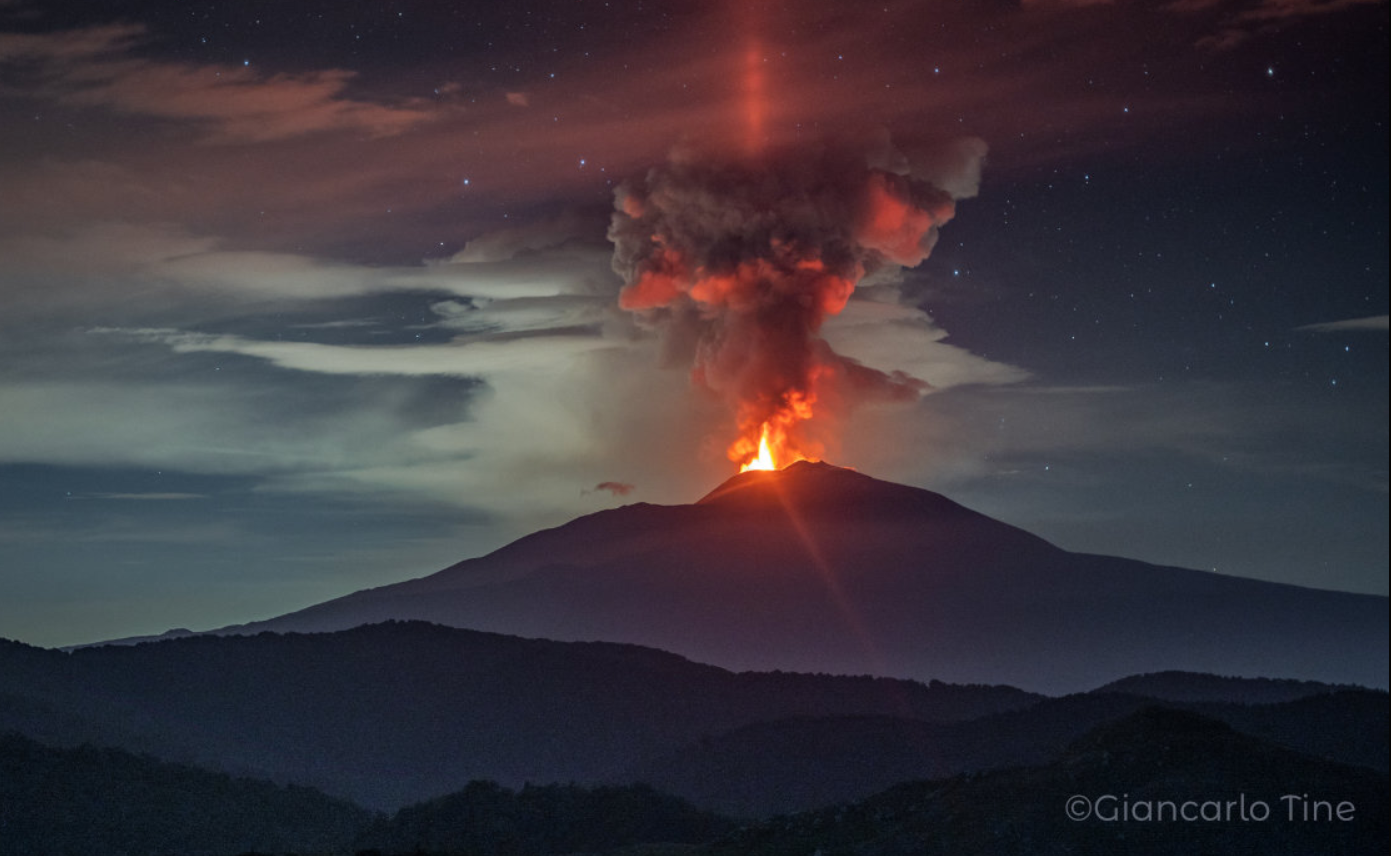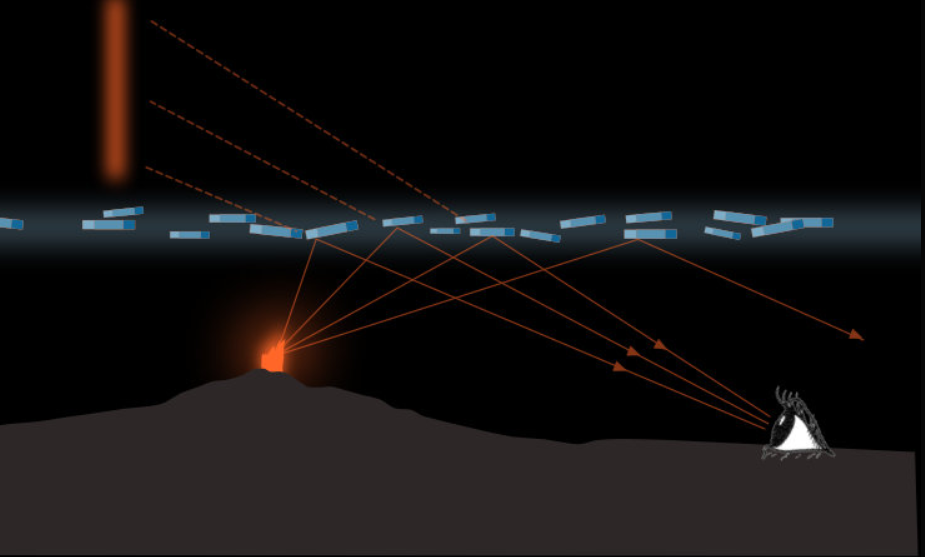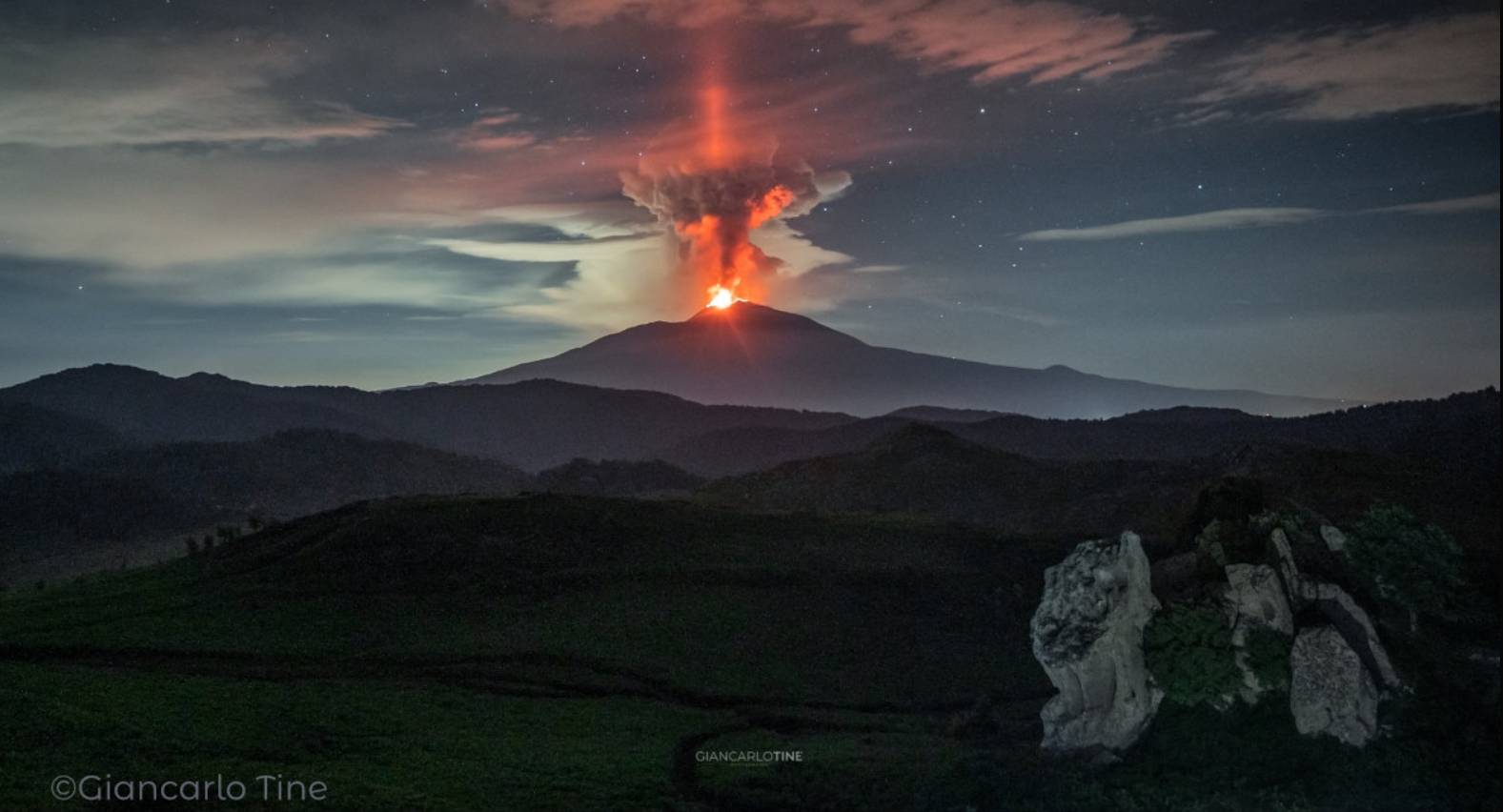Etna light pillar
Etna Light Pillar: A Mesmerizing Atmospheric Phenomenon
Mount Etna, the active volcano located in Sicily, Italy, is not only known for its dramatic eruptions but also for producing a captivating atmospheric phenomenon known as the Etna Light Pillar. While it may appear as though a red beam of light is shooting up into the sky from the volcano, the reality is more fascinating and complex.
The Etna Light Pillar is actually an optical illusion created by the interaction of light with ice crystals present in the thin veil of cloud surrounding the volcano. These ice crystals, which can be either cirrus clouds or formed from water vapor ejected by Etna itself, are shaped like hexagonal plates and are nearly horizontal in orientation. Each crystal acts as a tiny mirror, reflecting the bright fiery glow emitted by the volcano back down to Earth.
Here are some key points to help you understand the intricacies of the Etna Light Pillar:
-
Formation of Ice Crystals: The presence of ice crystals in the cloud layer surrounding Mount Etna is crucial for the formation of the light pillar. These crystals form when water vapor condenses at high altitudes where temperatures are sufficiently cold.
-
Optical Illusion: The collective reflections, or glints, from the millions of ice crystals create the illusion of a pillar-shaped beam of light extending upward from the volcano. However, there is no actual beam of light. It is the brain's interpretation of the reflections that gives rise to this mesmerizing phenomenon.
-
Optical Perfection: The Etna Light Pillar appears even more remarkable due to the near-optical perfection of the ice crystals. Their hexagonal plate shape and horizontal alignment enhance the clarity and intensity of the reflected light, adding to the illusionary effect.
-
Crystal Wobbling: In some cases, the ice crystals may wobble from their horizontal position, resulting in a slightly distorted or flickering appearance of the light pillar. This phenomenon is more common with larger crystals. However, if the cloud layer is deep enough, even smaller, non-wobbly crystals can contribute to the formation of a distinct pillar.
-
Variability in Pillar Shape: The shape and size of the Etna Light Pillar can vary depending on atmospheric conditions, such as the thickness and composition of the cloud layer. Factors like wind speed and direction can also influence the formation and appearance of the pillar.
-
Wonders of Nature: The Etna Light Pillar showcases the remarkable beauty and complexity of natural phenomena. The interplay between light, ice crystals, and atmospheric conditions gives rise to a visually stunning spectacle that captivates observers.
-
Scientific Study: Atmospheric scientists and researchers study phenomena like the Etna Light Pillar to gain insights into the behavior of light and its interaction with various atmospheric components. These studies contribute to our understanding of optical phenomena and help refine atmospheric models and simulations.
-
Photographic Opportunities: The Etna Light Pillar provides photographers with a unique opportunity to capture breathtaking images of this enchanting phenomenon. The vibrant colors and ethereal quality of the pillar make it a popular subject for astrophotography enthusiasts and nature photographers alike.
-
Beyond Etna: While the Etna Light Pillar is associated with Mount Etna, similar light pillars can be observed in other locations where atmospheric conditions are favorable. Volcanoes, industrial areas, and even urban environments with artificial lighting can give rise to these optical illusions when combined with appropriate cloud formations.
-
Nature's Marvels: The Etna Light Pillar serves as a reminder of the astonishing wonders that exist in our natural world. By appreciating and studying these phenomena, we gain a deeper appreciation for the intricate workings of our atmosphere and the extraordinary beauty that surrounds us.
The Etna Light Pillar is just one example of the countless atmospheric optical phenomena that continue to intrigue scientists and inspire awe in observers. Through ongoing research and observation, we can unravel the mysteries behind these captivating displays of light and gain a greater understanding of the dynamic and ever-changing nature of our atmosphere. So, keep your eyes to the sky and marvel at the wonders that await!

Etna
A scene fit for Lord of the Rings Caught by Giancarlo Tine (Instgm: giancarlotine.photo Fbk: giancarlotinephotography).
Sicily’s Mount Etna erupts. A lurid red shaft of light shoots from the volcano, pierces through the dense smoke and ash and on upwards high into the sky.
Or does it? The actuality is perhaps more prosaic. Notice the thin veil of cloud lit dim red by the volcano. It might be cirrus, it might be lower and formed by condensation of water vapor ejected from Etna. Whatever, it is sufficiently cold at that height to contain ice crystals. They are hexagonal plate shaped lying nearly horizontal. Each of the many millions acts as a tiny mirror reflecting Etna’s bright fiery mouth back down to earth. A volcanic light pillar

The collective reflections (glints) from the crystals form a pillar shape that the eye/brain places over the volcano. It is an illusion - there is no upwards beam of light. But millions of near optically perfect crystals producing that illusion is perhaps more wondrous.
The crystals here are shown as wobbling from an absolutely horizontal position. Large crystals do this. If the cloud layer is deep enough a pillar can be formed by smaller non-wobbly crystals.

Note: this article has been automatically converted from the old site and may not appear as intended. You can find the original article here.
Reference Atmospheric Optics
If you use any of the definitions, information, or data presented on Atmospheric Optics, please copy the link or reference below to properly credit us as the reference source. Thank you!
-
<a href="https://atoptics.co.uk/blog/etna-light-pillar/">Etna light pillar</a>
-
"Etna light pillar". Atmospheric Optics. Accessed on April 27, 2024. https://atoptics.co.uk/blog/etna-light-pillar/.
-
"Etna light pillar". Atmospheric Optics, https://atoptics.co.uk/blog/etna-light-pillar/. Accessed 27 April, 2024
-
Etna light pillar. Atmospheric Optics. Retrieved from https://atoptics.co.uk/blog/etna-light-pillar/.